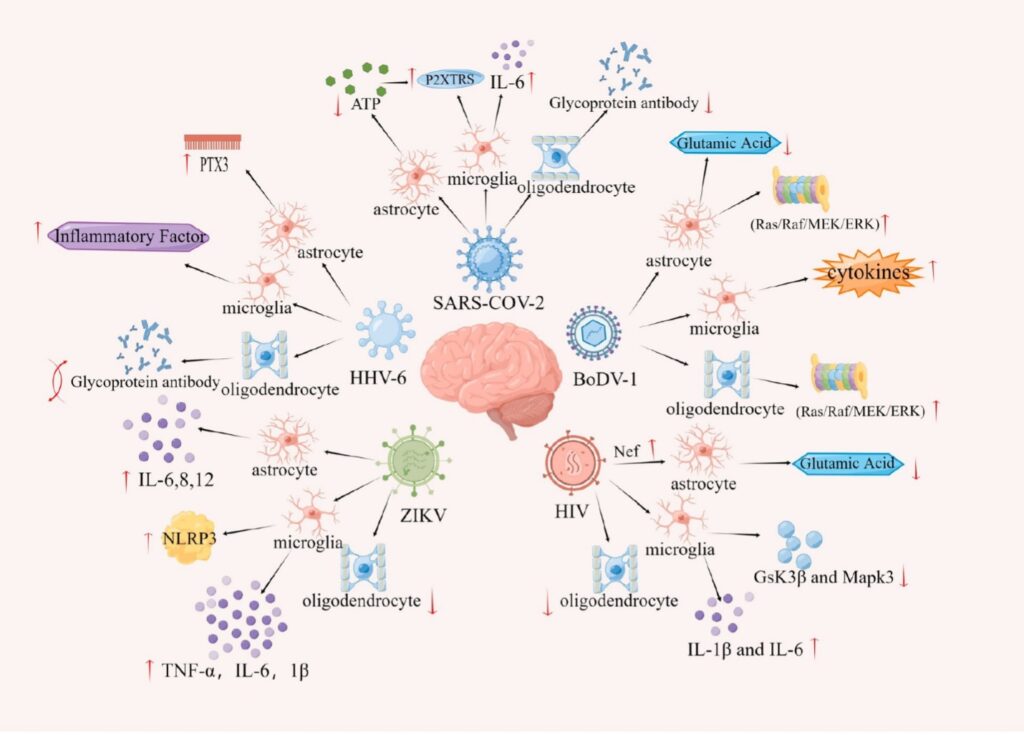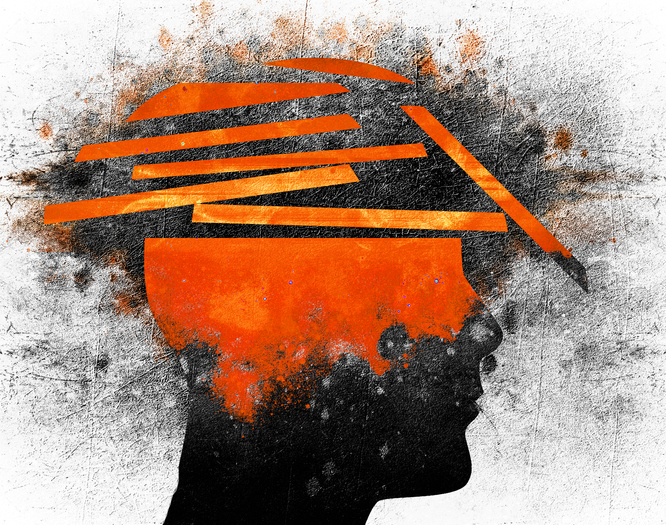Role of several viruses, including HHV-6A/B, in stimulating low-grade neuroinflammation.
One of the most important paradigm shifts in neurobiology in recent decades has been the recognition that glial cells—astrocytes, microglia and oligodendrocytes—are not simply the scaffolding around neurons: they are critically important in synapse formation and pruning, myelination, neurotransmission and immune defense/inflammation.
A second paradigm shift involves the growing evidence that chronic low-grade neuroinflammation may play an important role in the pathogenesis of several neurological diseases, including depression. A third paradigm shift—still of uncertain importance—is the possibility that chronic infection of the brain may be one cause of such chronic low-grade neuroinflammation. Given that herpesviruses are capable of infecting cells of the central nervous system chronically, they are obvious candidates to be one cause of such chronic low-grade neuroinflammation.
Investigators from the Shandong University of Traditional Chinese Medicine have published a review of the possible role of glial cells in the development of depression. They focus on studies of HHV-6 as well as SARS-CoV-2, BoDV-1, ZIKV and HIV, and the somewhat different mechanisms by which each of the viruses may elicit chronic neuroinflammation, as shown in Figure 1.

Figure 1: Mechanisms by which viruses affect depression through glial cells.
The review provides some useful literature references for those interested in the possible role of infectious-agent-induced neuroinflammation in various neurological diseases.
Read the full article: Yu 2023

